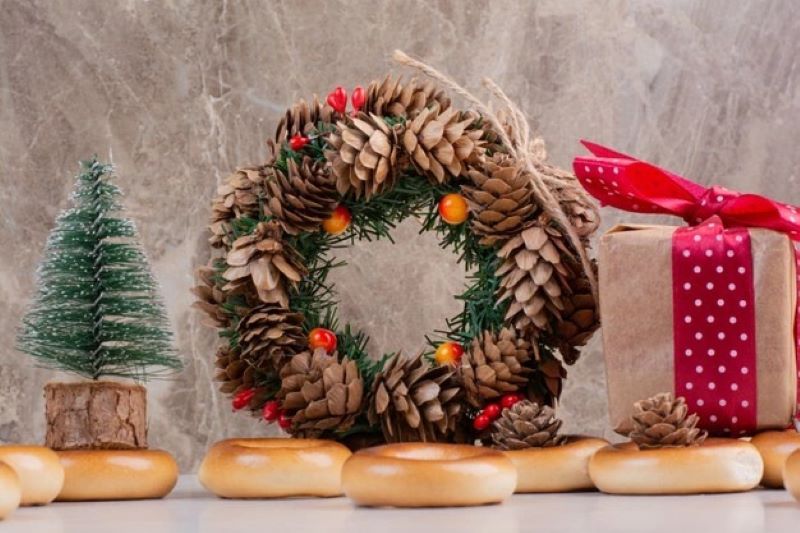As December rolls around, a timeless classic graces our homes – the Christmas wreath. This long-standing tradition has graced doors and mantles for decades, but the history of the wreath goes back much further.
The History of Christmas Wreaths: A Timeless Tradition
The origins of wreaths can be traced back to ancient Greek and Roman times, where they were used as crowns to signify power and victory. Later in Christian history, wreaths began to be used as a symbol of Christ and the crown of thorns he wore during his crucifixion. The evergreen foliage used in wreaths was also a sign of everlasting life, as evergreens do not lose their leaves through the winter months.
The use of Christmas wreaths in particular began in the 16th century in Germany, where Lutheran Christians would decorate their homes with wreaths as part of their Christmas celebrations. From there, the tradition spread throughout Europe and eventually to America in the 1800s.
Traditionally, Christmas wreaths were made using natural materials, such as pine and fir branches, holly leaves, mistletoe, and berries. These materials would either be collected from the wild or purchased from local markets. Wreaths would be handmade, with the branches and leaves being weaved together and secured with wire, twine, or ribbon.
Modern Christmas Wreath Trends and Designs
However, as time went on, artificial wreaths began to emerge as a more convenient and longer-lasting alternative. These wreaths can be made from a variety of materials, such as plastic, foam, or wire, and can be easily purchased in stores.
While some may prefer the authenticity and beauty of natural wreaths, artificial wreaths still carry on the tradition of Christmas wreaths and offer their own advantages. Unlike natural wreaths, artificial wreaths do not dry out or shed leaves, making them a longer-lasting solution. They are also more durable and can withstand harsh weather conditions, making them suitable for outdoor use.
Artificial wreaths also offer a wider range of design options, as they can be made in various shapes and colors to suit individual preferences. Some may opt for a traditional circular wreath with red and green foliage, while others may prefer a more modern rectangular or shaped wreath with white or silver accents.
How Artificial Varieties are Keeping the Christmas Wreath Tradition Alive
Despite the shift towards artificial wreaths, many still appreciate the beauty and history of natural wreaths. Some families make a tradition out of collecting materials and crafting their own wreaths, a process that can bring joy and togetherness during the holiday season.
Overall, the Christmas wreath remains a cherished tradition, whether it be made of natural or artificial materials. Its symbolism of life and eternity, as well as its festive appeal, makes it a perfect addition to any home during the holiday season.

